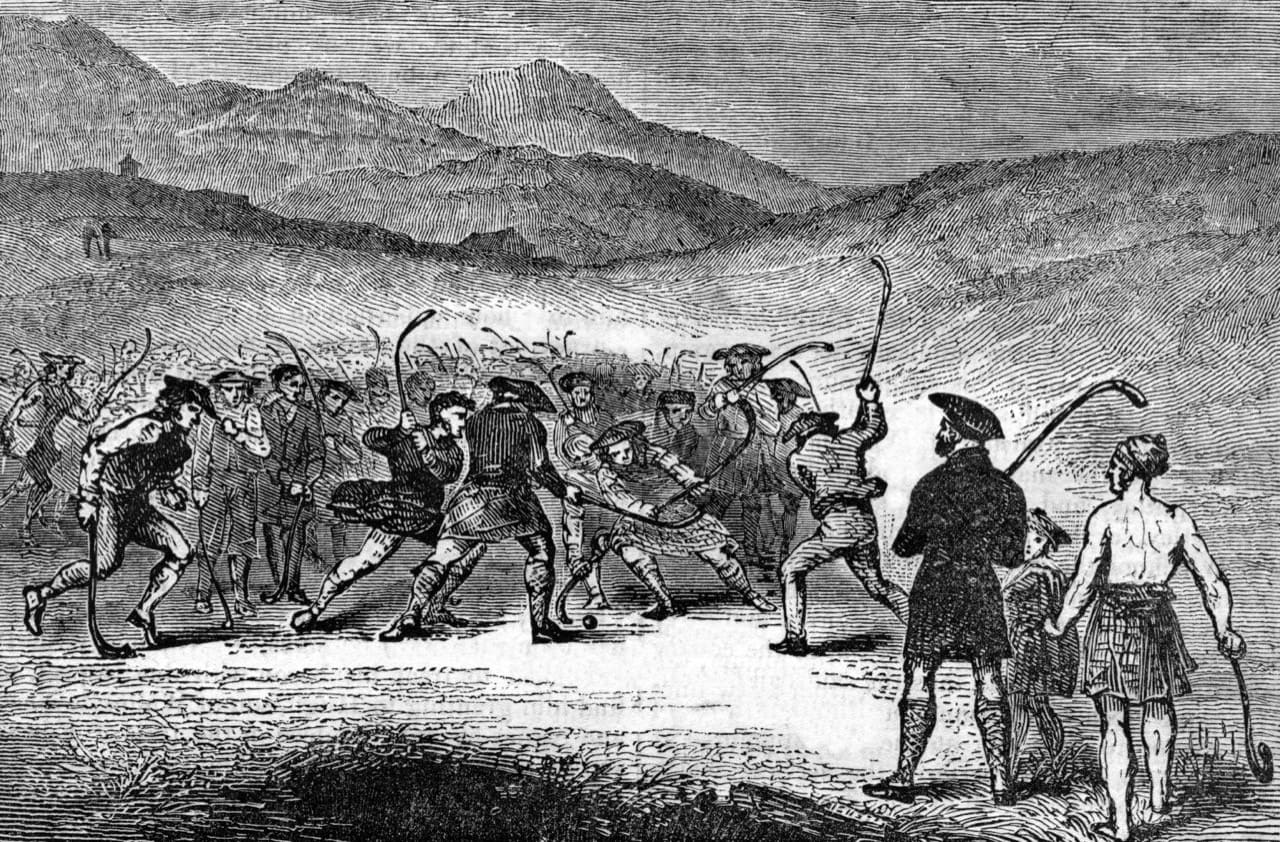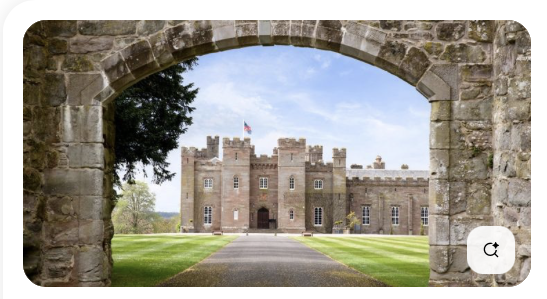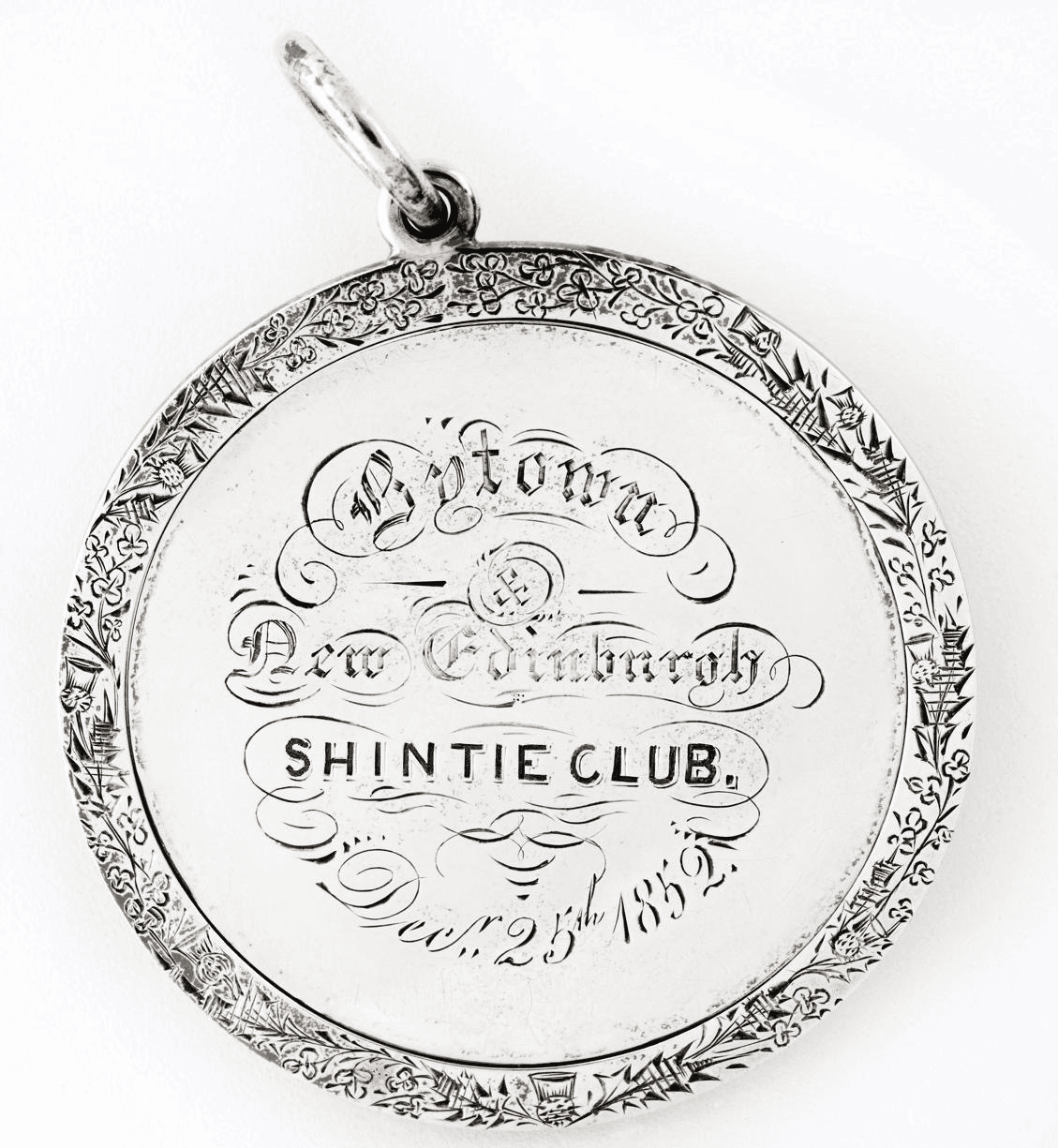Alastair Sweeny, PhD, has written extensively about Thomas Mackay, including his 2022 book “Thomas Mackay: The Laird of Rideau Hall and the Founding of Ottawa”.
Other books authored by Alastair Sweeny include George-Étienne Cartier: A Biography, BlackBerry Planet, and Fire Along the Frontier: Great Battles of the War of 1812. Alastair is based in Ottawa and is a member of the Historical Society of Ottawa.
More on the story of the New Edinburgh Shintie Club medallions can be read in the excellent book “Win, Tie, or Wrangle: The Inside Story of the Old Ottawa Senators 1883-1935” by the late Paul Kitchen.
Scottish Shinty
Shinty (or shintie) is unique to Scotland and is regarded as the Scottish national sport. The game was supposedly introduced from Ireland 2000 years ago, along with Christianity, and was often played clan against clan.
Shinty is played with a cork ball covered in leather, that is slightly smaller than a tennis ball. Shinty sticks or camans were formerly similar to modern hockey sticks and are commonly confused by the same.
 Shinty in the Highlands with Camans
Shinty in the Highlands with Camans
The earliest reference to shinty – or camanachd, prounounced ca-man-achd in Gaelic – comes from a Scottish text written on 1608:
A vehement frost continued from Martinmas [November 11] till the 20th of February. The sea froze so far as it ebbed, and many people went into ships upon ice and played at the chamiare [shinty] a mile within the sea mark. Many crossed over the Firth of Forth on the ice a mile above Alloa and Airth, to the great admiration of aged men, who had never seen the like in their days.
The keenness and duration of this frost was marked by the rare occurrence of a complete freezing of the Thames at London, where accordingly a fair was held upon the ice. In Scotland, rivers and springs were stopped; the young trees were killed, and birds and beasts perished in great numbers. Men, travelling on their affairs, suffered numbness and lassitude to a desperate degree. Their very joints were frozen; and unless they could readily reach shelter, their danger was very great. In the following spring, the fruit-trees shewed less growth than usual; and in many places the want of singing-birds was remarked.
The cold was caused by the eruption of the Peruvian volcano, Huaynaputina, which sent over 12 cubic miles of rock and ash into the atmosphere. This caused catastrophic weather events for a decade, including a Russian famine that killed two million.
Ice hockey evolved from Shinty after Highlanders and Scottish soldiers settled in Canada and took to playing shinty on ice for lack of a grass field in winter. Informal ice-hockey games in Canada are still referred to as shinny games.
In 1809, we find one of the very first documented mentions of a ball and stick game being played on the ice by skaters, in Perth, Scotland.
 Scone Abbey
Scone Abbey
Close to Perth is Scone Abbey, where the Kings of Scotland were traditionally crowned for hundreds of years. From the 9th to the 15th Century, Perth was effectively the capital of Scotland. It was a primary residence for monarchs, and it was where the Royal Court was held. Royalty enhanced the early importance of Perth, and Royal burgh status was given to the city by King William the Lion, in the early 12th century.
In 1836, Scottish historian George Penny published Traditions of Perth, a collection of town anecdotes. One of his entries mentions games of shintie being played on Inch Island in the Tay River that runs through the town. Shintie – aka “shinty” – was an old Scottish form of field hockey or bandy, played with a ball and a caman - a shintie stick curved at one end, similar to a field hockey stick. Penny relates that Perth boys also played an ice version on skates:
The Shinty or Club used to be played in all weathers on the Inch; and frequently on the streets, by large assemblies of stout apprentices and boys. This game was also played on the ice by large parties, particularly by skaters, when there was usually a keen contest.
This explicit reference to skates is absent from the 1607-08 and 1740 references to games played on the ice.
It’s highly probable that one passionate player of the game was a seventeen year old Perth lad, Thomas Mackay, apprenticed to his father as a mason. After his father’s death at age 50, Thomas and his wife and mother emigrated to Canada, where he found plentiful masonry work in Montreal. In 1815 he won a contract to build the Lachine Canal, and in 1825, on the recommendation of Governor Lord Dalhousie, the Royal Engineers engaged him to build the Rideau Canal entry locks. In the 1840s, next to the Rideau Falls, he built a mill complex and village he called New Edinburgh, and a villa his daughter named Rideau Hall.
Mackay never forgot the game of his youth, and encouraged his friends and mill workers to take time out for winter play on the frozen Rideau River. On Christmas Day, 1852, Mackay, then age 60, hosted an ice shintie match between the New Edinburgh Scots against the Bytown Sassenachs (Englishmen). The Scots won 2-1 and the Laird of Rideau Hall awarded the Shintie Club winners this silver medal, now in the Bytown Museum in Ottawa.
 Mackay’s Silver Shintie Medal, 1852 @Bytown Museum
Mackay’s Silver Shintie Medal, 1852 @Bytown Museum






